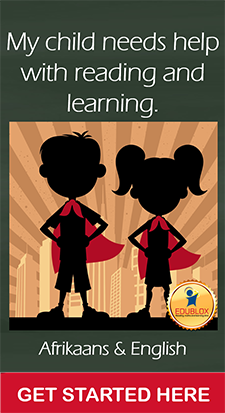

Edublox answers…
To be held back in school can be stressful for a child as well as his parents. On the other hand, to continue to a next grade if the child cannot cope academically, can be equally stressful if not more — and the rest of their education might be an uphill battle. However, you have no reason to feel that you have failed your son, as the origin of his problems is clearly his ear infections, which caused the language delay and contributed to his reading difficulties.
Language plays a vital role in reading. Its role in reading can be compared to the role of running in the game of soccer or ice-skating in the game of ice hockey. One cannot play soccer if one cannot run, and one cannot play ice hockey if one cannot skate. One cannot read a book in a language unless one knows that particular language. If a child’s knowledge of English is poor, then his reading will also be poor.
If a child’s knowledge of English is poor, then his reading will also be poor
If a child’s grasp of the English language is inadequate, the only way through which his reading could be improved, is by first improving his command of English. Without effectively working at improving his English, the reading ability of the child will not improve. Let us refer to this kind of problem as a “language problem.” Comprehensive reviews of the evidence that links reading problems and language problems have been extensively presented in the literature.
Preschool children suffering temporary deafness over a period of time due to infections of the ear, like your son, or children, who have been diagnosed as hard of hearing at a late stage, will often have a language problem. However, the most common indication of a language problem is that the child started talking late.
Language milestones
In most cases, a baby should be able to understand simple words and commands from the age of nine months. From around a year, he should start saying his first words. From about two years, he should be able to use simple phrases, and by three he should be able to use full sentences. By four, he should be fully able to talk, although he may still make grammatical errors. By five, he should have acquired basic language.
If a child talks immaturely, or still makes unexpected grammatical errors in his speech when he is five years old, this should alert the parents to probable later reading problems. The parents should immediately take steps to improve the child’s language. Even when a child is older already, but has a history of late talking, the parents should also follow the advice given below to improve the child’s language. The method that will be explained has proved to be extremely effective, but it will also be explained how and why it works.
How a child learns language
Let us consider how a child learns language. Keep in mind that there is nothing that any human being can do which he has not learned to do. This is especially true of language. One very often encounters the expression “language development” when referring to the child’s acquisition of language. By this expression it is often intended to imply that the child’s acquisition of language is an automatic process.
This is a completely misguided idea. Language development should not imply that it is an innate and “natural process” or that the child’s knowledge of language grows by itself.
The baby learns language in one way only, and that is by hearing language as the parents talk and talk to it, while feeding, bathing and dressing the baby. The more a parent can talk to a child, often repeating the same words, the same phrases, the same structures over and over, the sooner the child will learn language.
An important thing to note here is that by the time a baby is about nine months old, as was mentioned above, he should be able to understand simple words and commands. He may perhaps also be able to say a few simple words already. Invariably, however, one finds that the baby understands much more than he is able to say. In fact, this remains so of any person throughout his life. One is always able to understand more of any language, even one’s mother tongue, than one is able to use in active speech. This is even more so of any second or third languages that a person is able to speak.
This shows that we have two more or less separate masses of language knowledge, our passive knowledge (also called receptive language) on one hand, and our active (expressive language) on the other. When we listen or read, we make use of our passive vocabulary, and when we speak or write, of our active vocabulary. An important thing to note here is that the child’s passive vocabulary came into being through constant repetition of words, phrases or structures. Once a word, phrase or structure has been repeated often enough, it also becomes part of the baby’s active vocabulary. As stated by Dr. Beve Hornsby, a child who is just beginning to talk must hear a word about 500 times before it will become part of his active vocabulary. Long before that it will already form part of his passive vocabulary.
This shows that the active vocabulary can only be improved via the passive. The stratified nature of learning applies here.
Overcoming a language problem
When a child has a language problem, that is, when it is suspected that his vocabulary and use of language is not up to expected standards, then there is only one way in which this can be remedied, and that is by providing the child with enough opportunities to hear language. There must be enough repetition of the same words, phrases and grammatical structures.
A practical way of providing the child with enough opportunities to hear language, is by following the steps below. (Note that, if you do this right, the biggest effort would be to find and/or record suitable stories. The daily implementation does not require any of the parent’s or of the child’s time.)
1. Find a story that is suitable for a child one to two years older than your own child. The story must be no more than 10 minutes long. Make a recording of this story, taking pains to read it as clearly as possible. Alternatively, you can buy a suitable story. You will also need a CD-player, Ipod or MP3-player with an auto-reverse function. You may or may not use earphones.
2. This recording must now be played to the child for three hours per day, or as close to three hours as possible. (Two hours per day would probably be sufficient if the child’s language problem is not severe.) What is needed is complete immersion. Playing the story only two or three times a day will not achieve much. However, it is not necessary for the child to sit still and listen to the story. Rather, a background of language must be created for the child, so that he can continue with his other daily activities against this background. The volume should be set so that the words will be clearly audible, but not so loud that it is disturbing.
One can also play the recording for the first hour after the child has gone to bed. And, if it doesn’t disturb the child, one can leave it playing throughout the night.
3. As was mentioned above, repetition must form the backbone of this background. The same story must be played over and over until the words, phrases and grammatical structures in the story have become part of the child’s active vocabulary. This will take about three months, and in some cases even longer.
4. After at least three months, the same procedure must be followed with a new story. The child must listen to it continually, again for at least three months.
5. In this way one continues playing the same story over and over for at least three months, using a new story every three months, until the child’s active vocabulary is up to standard.
Your second priority is to improve his cognitive skills
The game of soccer consists of many fragmented elements or skills — passing, shooting, heading, etc. Before any child is expected to play in a full-game situation, they should first be trained to pass, shoot and head the ball. It is the same with reading. Cognitive skills, such as visual processing, auditory processing and auditory memory form the foundation of reading, and must be taught first.
Visual processing is one of the important cognitive skills and refers to the ability to make sense of information taken in through the eyes. Visual processing skills include the ability to discriminate between foreground and background, colour, shapes, sizes and position in space. Last-mentioned refers to the ability to accurately perceive objects in space with reference to other objects. A person with a spatial problem may find it difficult to distinguish letters like b and d, as well as n and u.
Auditory processing skills include auditory discrimination. This refers to the ability to hear similarities and differences between sounds. Auditory blending is the ability to put individual sounds together which form a word. The child who has a difficulty in this area is unable to blend the individual sounds in a word, such as /c-a-t/. The child may know the individual phonemes but simply cannot put them together.
Auditory memory important for phonics
According neurodevelopmentalist Cyndi Ringoen, a poor auditory short-term memory is often the cause of a child’s inability to learn to read using the phonics method. Phonics is an auditory learning system, and it is imperative to have a sufficient auditory short-term memory in order to learn, utilise and understand reading using the phonics method.
According to Ringoen, in order to begin to utilise phonics beyond memorising a few individual sounds, a child must have an auditory digit span close to six. Digit span is a common measure of short-term memory, i.e. the number of digits a person can absorb and recall in correct serial order after hearing them or seeing them.
To test the auditory digit span of a child, say numbers slowly in one second intervals, in a monotone voice. Say, for example, 6-1-5-8 and have the child repeat it back. If they can, then say 9-2-4-7-5. The child must be able to say a 4 digit sequence back correctly 75% of the time on the first try to be considered at a short-term memory of 4, and it is the same for each higher digit.
Edublox specialises in educational interventions that make children smarter, help them learn and read faster, and do mathematics with ease. Our programs enable learners to overcome reading difficulties and other learning obstacles, assisting them to become lifelong learners and empowering them to realise their highest educational goals.






I have a child by the name of Nokuzola,she is in grade 5.She cant cope at school and she have language problem,she cant read and write english,but she can talk.i need a help for het to join your program.
Dear Florah
Thank you for your inquiry.
Kindly contact your closest Edublox clinic for an assessment and help: http://www.edubloxsa.co.za/contact-us/
Kind regards
The Edublox Team